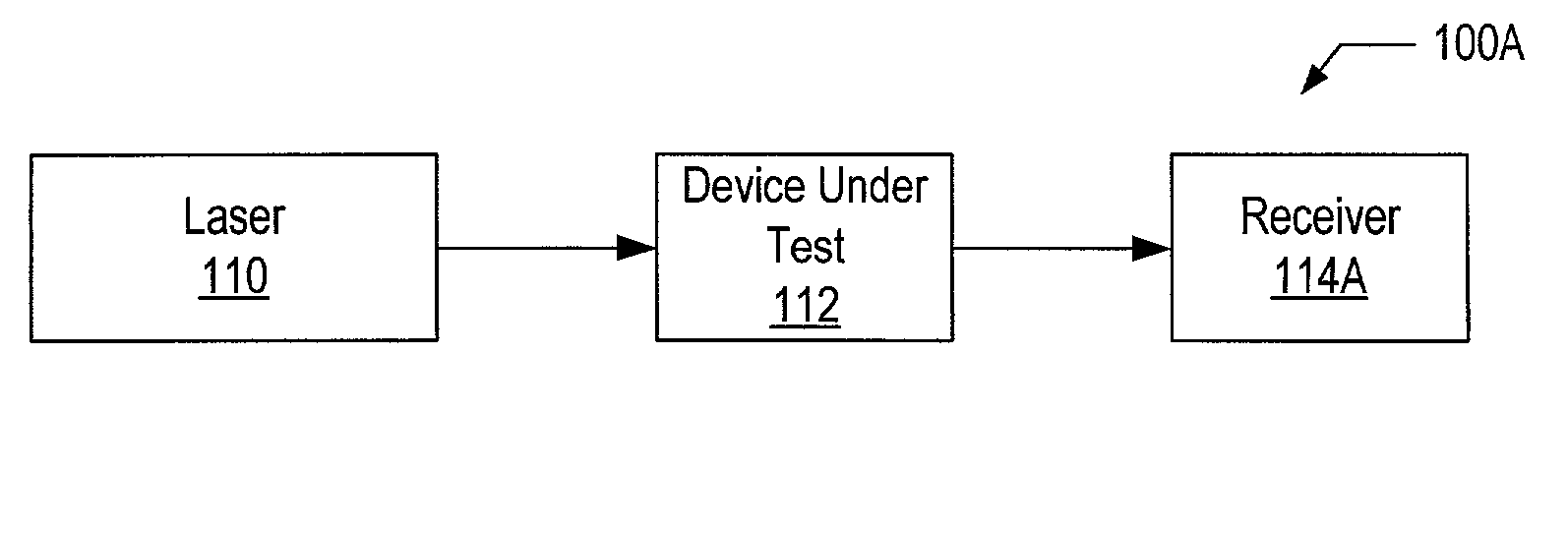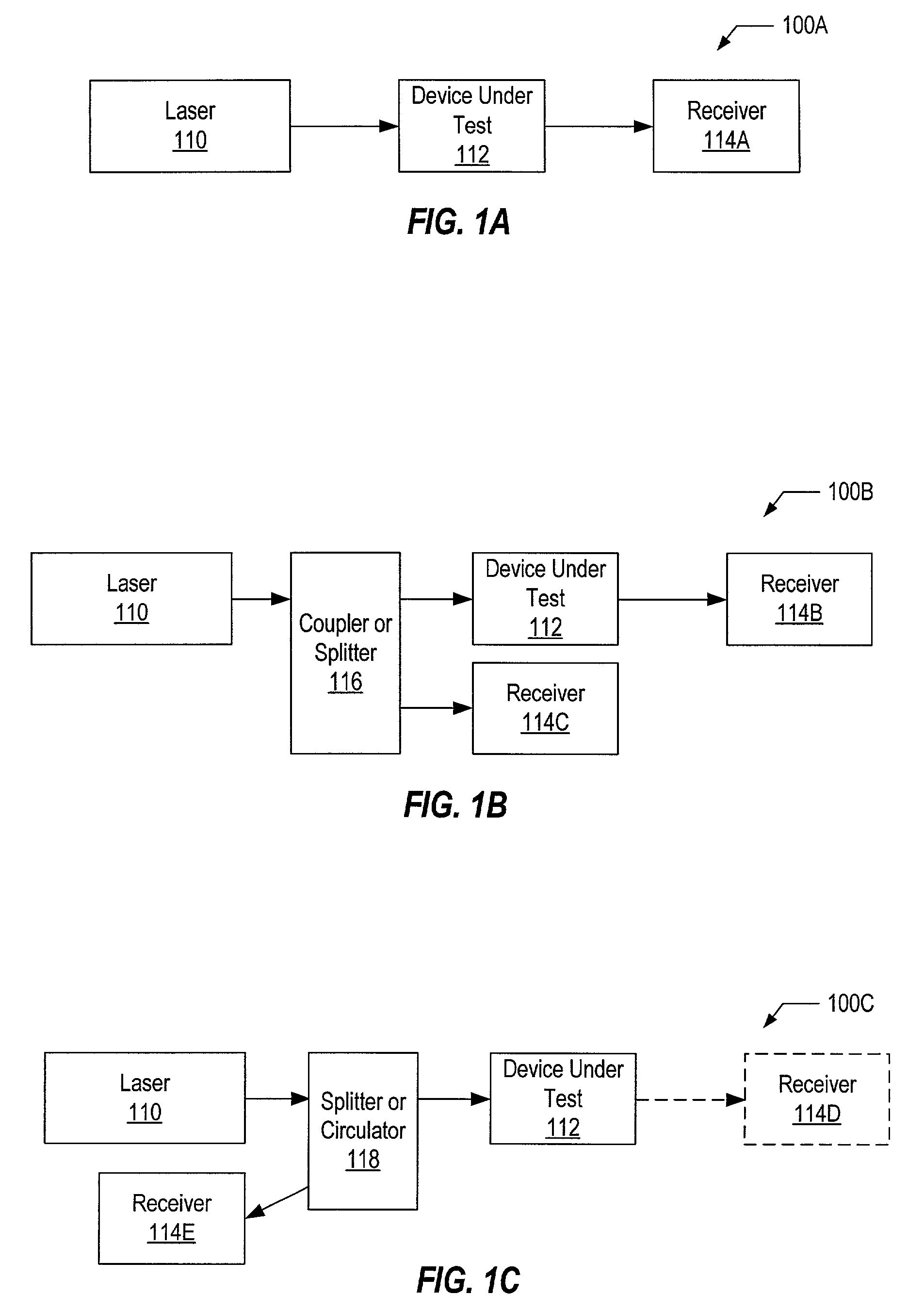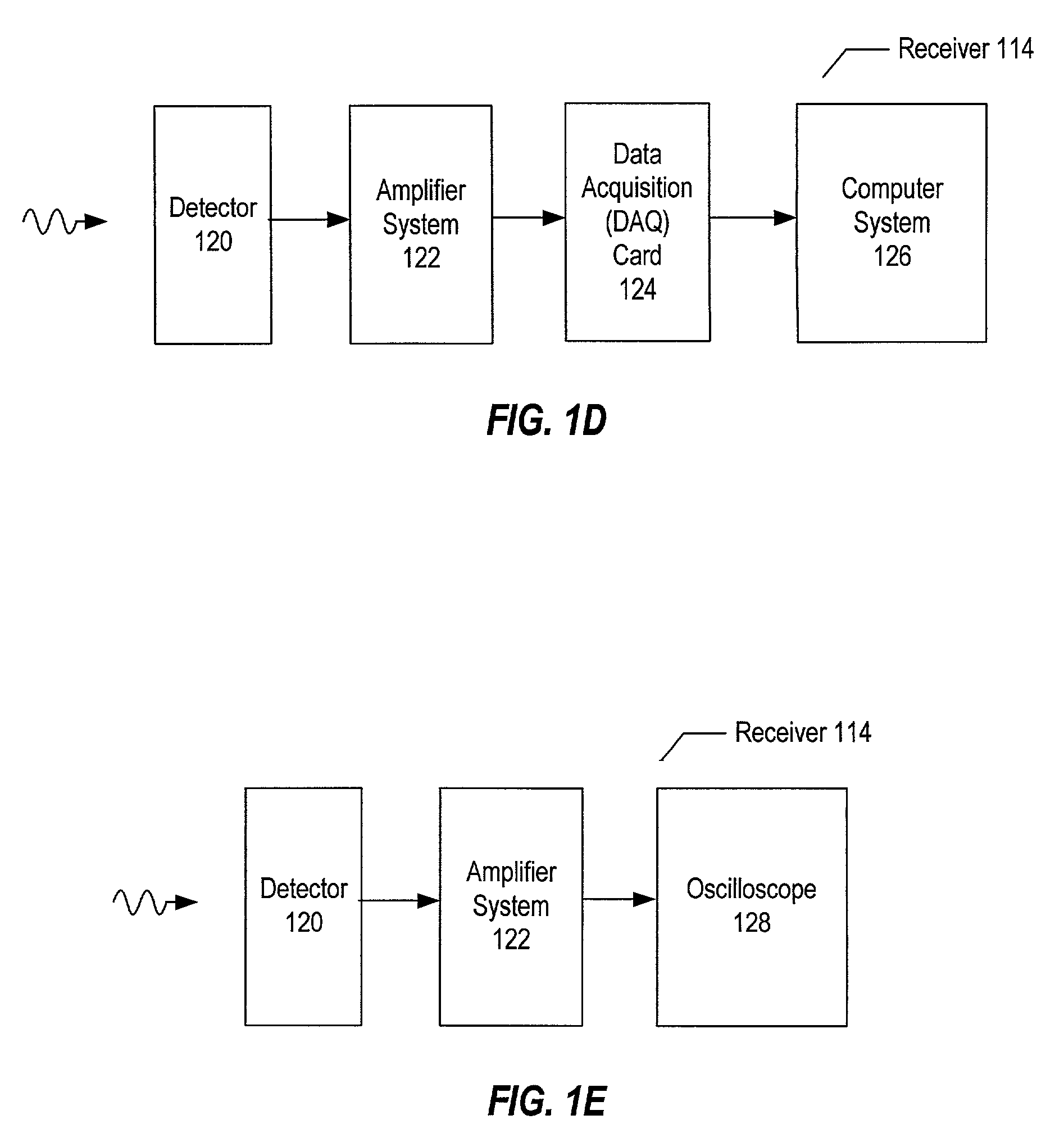Optical receiver including a dual gain path amplifier system
an amplifier system and optical receiver technology, applied in the field of optical receivers, can solve the problems of inability to provide the dynamic range needed to capture the output of an optical component over the entire sweep of the laser, the inability to test using a step-and-measure system, and the inability to complete measurement in hours
- Summary
- Abstract
- Description
- Claims
- Application Information
AI Technical Summary
Problems solved by technology
Method used
Image
Examples
Embodiment Construction
[0019] Before describing various embodiments of an optical receiver that includes a dual gain path amplifier, several systems that may include such an optical receiver will be discussed. FIGS. 1A-1C show typical measurement systems that may be used to characterize an optical component. In some embodiments of the systems shown in FIGS. 1A-1C, the optical component or device under test (DUT) 112 may include a coupler, combiner, splitter, attenuator, isolator, circulator, multiplexer, demultiplexer, interleaver, or wavelength filter.
[0020] FIG. 1A shows a system that may be used to measure the transmission characteristics of an optical component 112. In FIG. 1A, a laser 110 provides an input to DUT 112 and the output from that device is received by receiver 114A. The optical stimuli provided by laser 110 may sweep across a range of wavelengths, allowing the transmission of the component 112 to be characterized as a function of wavelength.
[0021] In FIG. 1B, a system that may be used to ...
PUM
 Login to View More
Login to View More Abstract
Description
Claims
Application Information
 Login to View More
Login to View More - R&D
- Intellectual Property
- Life Sciences
- Materials
- Tech Scout
- Unparalleled Data Quality
- Higher Quality Content
- 60% Fewer Hallucinations
Browse by: Latest US Patents, China's latest patents, Technical Efficacy Thesaurus, Application Domain, Technology Topic, Popular Technical Reports.
© 2025 PatSnap. All rights reserved.Legal|Privacy policy|Modern Slavery Act Transparency Statement|Sitemap|About US| Contact US: help@patsnap.com



